Wanderlust Chronicles - Ep. 2 Peru
Wanderlust Chronicles - Ep. 2 Peru
Why Peru?
I went to Peru when I graduated college. In fact, with a hubris only found when one is 22 (cue Taylor Swift's "22" - "we're happy, free, confused, and lonely at the same time. It's miserable and magical, oh yeah"), I graduated college a quarter early in order to travel to Peru. I am not sure where I got the idea, having grown up in Ohio it was not the foremost place to visit. But I was a Spanish major with a small history obsession who wanted to learn more of the once invincible Incas.
As this is meant to be a travel guide, I will focus on what I remember doing and what I enjoyed while there. But because I am an oversharer, I will also share a bit of what it was like to be living abroad, mostly alone, for the first time since that colored so much of what Peru was like for me. I was also heartbroken, I mean really heartbroken, for the first time. Some memories of my time there are as clear as if they happened yesterday rather than 17 years ago. Others are fuzzy, more recollections of feelings, a smell or taste, mere snapshots of a place in time.
Preparation
Being a native English speaker and a budding teacher low on funds, I figured the best way to be able to go to Peru for an extended period was to go as an English teacher. So that is what I did. I found a TEFL course, enrolled and bought a plane ticket. There was not much planning or thought that went into it beyond that. Again, hubris. My 39-year-old anxious self now puts more thought into which tomatoes to buy for dinner than I did for that trip. I would encourage slightly more preparation :-)
While not generally prepared for my trip, I did go to a Travel Medicine specialist for the first time before my trip to Peru (perhaps foreshadowing my future role at a travel clinic). I was recommended a Yellow fever shot and malaria medication, which I took. Healthy Travel recommends the following vaccinations for Peru currently. Since the TEFL course was in Cusco, that is where I focused my trip, though I did fly in and out of Lima. I arrived in Lima, bookeared copy of “Eat, Pray, Love” in hand, at the end of February, I think, and spent about 4 days there.
I remember very little of what I did in Lima, but that was likely not Lima’s fault. I was anxious to get to where I would be living. I do remember not feeling particularly safe there but as a 22-year-old female travelling by herself, that probably would have been true in most places. I flew from Lima to Cusco and was quickly shuttled to the small two room apartment the school provided for me. It was about a 30-minute walk from the school, which was situated just off the Plaza de Armas.
Cusco
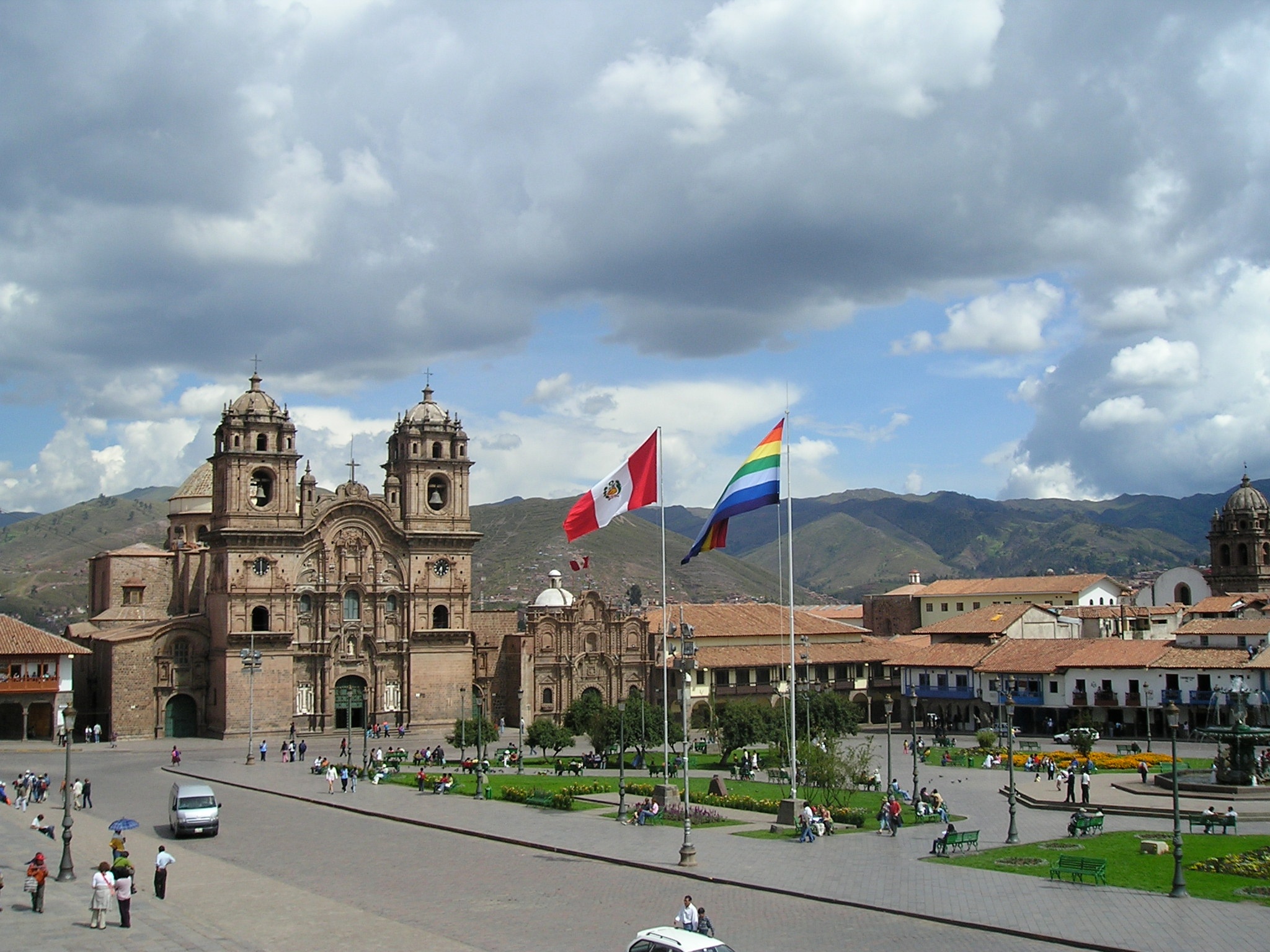
I arrived a few weeks before school started and intended to use that time to explore Cusco and do a few of the touristy things in the immediate vicinity of Cusco. I decided to save the world-famous trek to Macchu Picchu for after I was done teaching. Cusco is an amazing city for several reasons:
-
Historical Significance: Cusco was the capital of the Inca Empire, the largest pre-Columbian civilization in the Americas. The city's rich history is evident in its well-preserved archaeological sites, impressive Inca stonework, and colonial architecture.
- Gateway to Machu Picchu: Cusco serves as the gateway to the legendary Machu Picchu, one of the New Seven Wonders of the World.
- Cultural Fusion: Cusco is a vibrant blend of Inca heritage and Spanish colonial influences. This fusion is evident in the city's architecture, traditions, and festivals. The mix of indigenous Quechua culture and colonial charm creates a unique and captivating atmosphere, offering visitors a glimpse into Peru's diverse cultural tapestry.
- Vibrant Markets: Cusco is home to bustling markets, such as the San Pedro Market and the traditional Sunday market in Pisac.
- Natural Beauty: Nestled in the Andes Mountains, Cusco boasts stunning natural landscapes that surround the city. From the breathtaking Sacred Valley to snow-capped peaks and tranquil lakes, the region offers abundant opportunities for outdoor adventures like hiking, mountain biking, and exploring remote villages.
Altitude Sickness
Unfortunately, altitude sickness hit me hard soon after I arrived to Cusco (my symptoms were headaches, fatigue, nausea and loss of appetite). Whether for lack of advice or lack of listening, I was caught off guard and unprepared for the effects (Cusco is situated at 3`399 meters above sea level). Luckily the man who set me up in my apartment introduced me to the magic of Coca leaves. Some find them bitter, and I suppose they are, but there is a great sort of minty umami flavor accompanying them. I gorged myself as I found it the only way to alleviate my headache. I drank tea, had coca candy and sometimes just chewed the leaves. It helped and I was able to slowly ease into Cusco by simply walking around the city (Cusco is an eminately walkable city (from my memories)). While I was obviously a tourist, I don’t remember being overwhelmed or taken advantage of. In the touristy areas of course there were vendors aggressively selling goods, but mostly beyond that I felt safe and almost ignored, in a way I enjoyed.
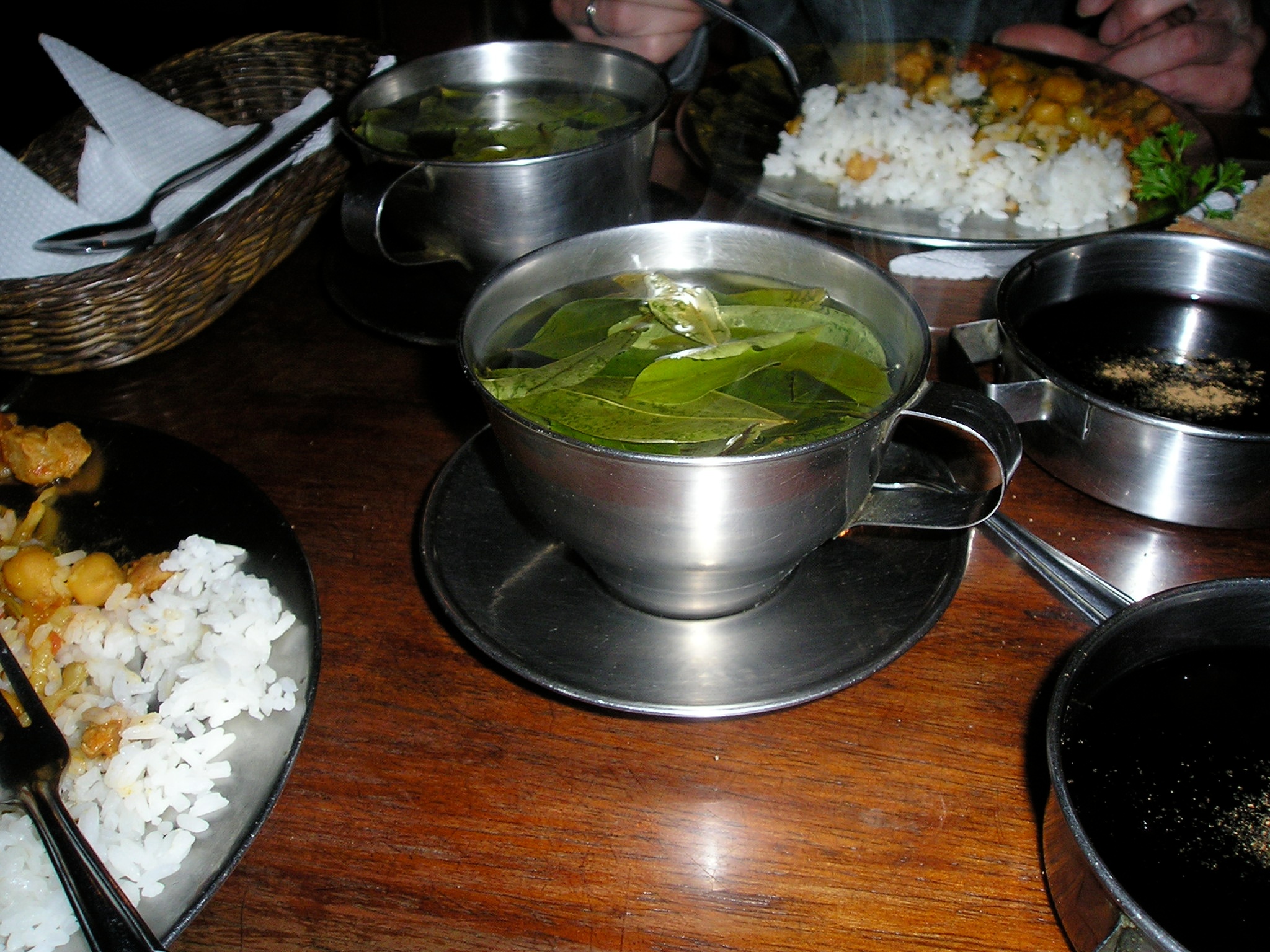
Food and Drinks
I explored many of the little restaurants and coffee shops which offered extremely yummy food at a low price. I never had any issues with my stomach, once I got over my altitude sickness. I remember the food being mostly vegetarian and full of lots of legumes, corn, vegetables and tubers. Extremely good. Of course, the famous Anticuchos (beef heart) or Cuy (guinea pig) was available, but I avoided that until the end of my trip when my desire to get the “full Peruvian experience” outweighed my discomfort eating a tiny grilled guinea pig, which often was served to tourists sporting a tiny hat carved from a tomato. While not my personal favorite (it tastes a bit like greasy, dark meat chicken), guinea pigs continue to be an important protein source in the region and most households in the Andean highlands raise the animal.
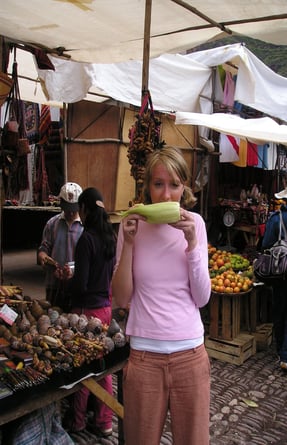
However the vegetarian food, ceviche and Pisco Sours (of course) are where Peruvian food shines, at least for me. Corn is an important staple and some of my favorite corn-based dishes include Chicha de Jora, which is a drink made from yellow maize that has a pale, milky, yellow color and tastes slightly sour (much like hard apple cider), and a purple jelly-like dessert called Chicha Morada, which gets its color from purple corn (though I have since learned that this can also be served in drink form).
Sacred Valley - Area Surrounding Cusco
After a few days I began to feel better and made use of my free time to explore some of the local Incan ruins in the areas around Cusco. In this time I visited:
- Ollantaytambo
- Sacsayhuamán
- Salineras de Maras (Maras Salt Mines)
- Alpacas of Awana Kancha
To book these tours I utilized some of the many tourist offices available in Cusco. I do not remember the specifics of any of the tours I took, but I enjoyed them all and found them all well organised and awe-inspiring. Later I got a bit more adventurous in traveling on my own, and found Cusco and Perú in general pretty easy to navigate by bus. Here a few snapshots from this time:
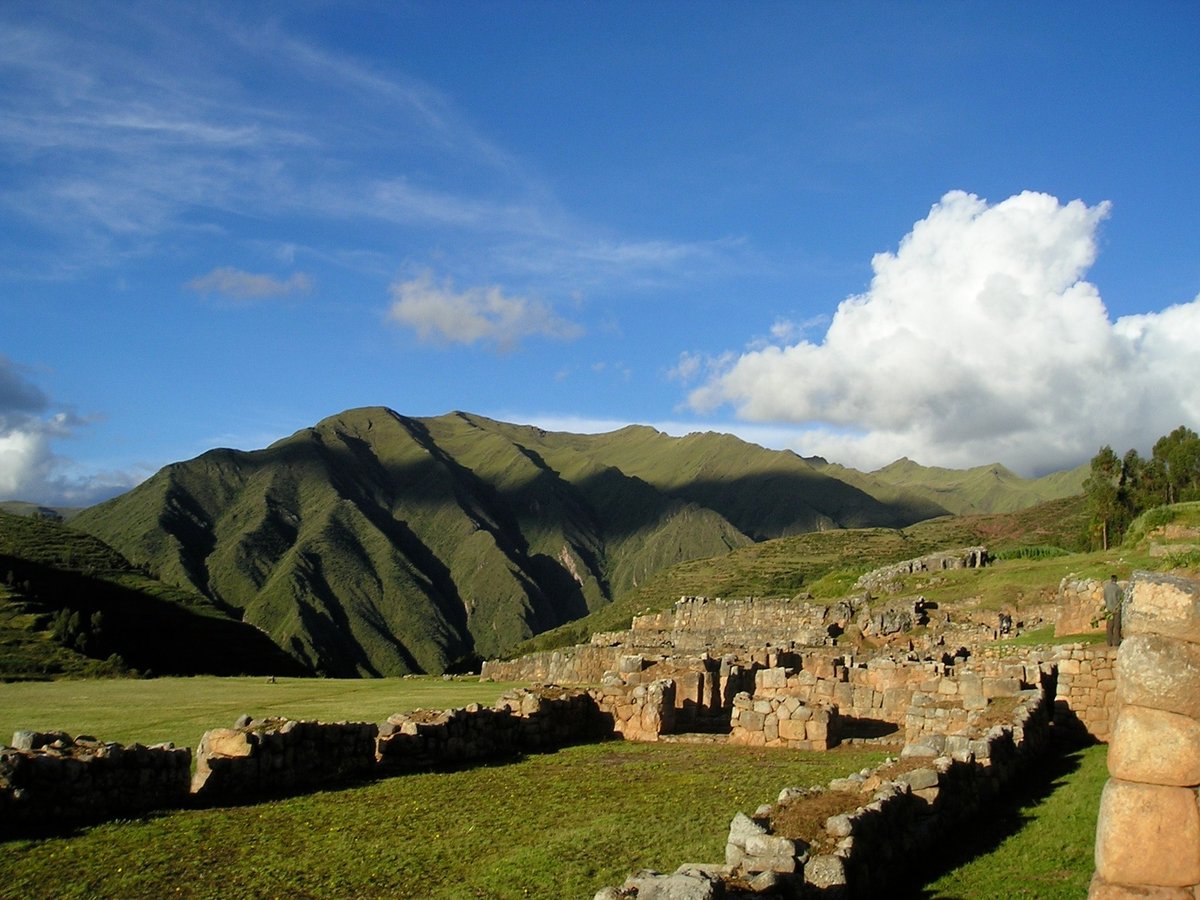
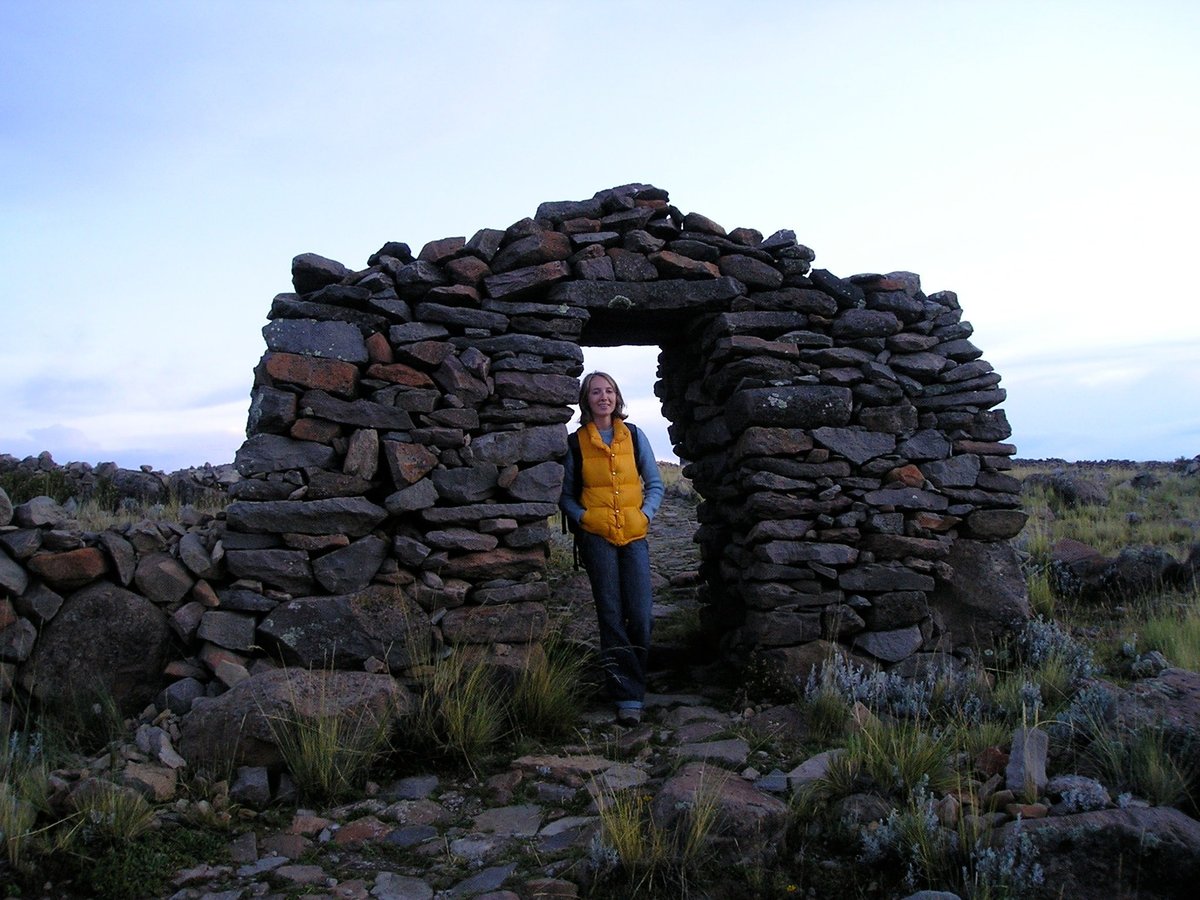


I also visited some of the local museams, both of which I would recommend but especially the Museum of Pre-Colombian Art:
Of course just walking around the city one can see its history. Long before the arrival of the Spanish conquistadors, Cusco flourished under Inca rule, with intricate stone temples, palaces, and terraced gardens gracing its landscape, much of which are visible to this day. In 1533, the Spanish conquistador, Francisco Pizarro, and his men invaded the Inca Empire, bringing with them destruction and upheaval. The Spanish conquerors dismantled many Inca structures, replacing them with their own colonial architecture. However, despite the devastating consequences of colonization, the indigenous people in the region were able to preserve their cultural traditions and blended them with elements of the Spanish influence. The city of Cusco is a living testament to this cultural fusion, a place where ancient Inca ruins stand alongside Spanish cathedrals, forming a unique and captivating architectural tapestry.
School and Daily Life
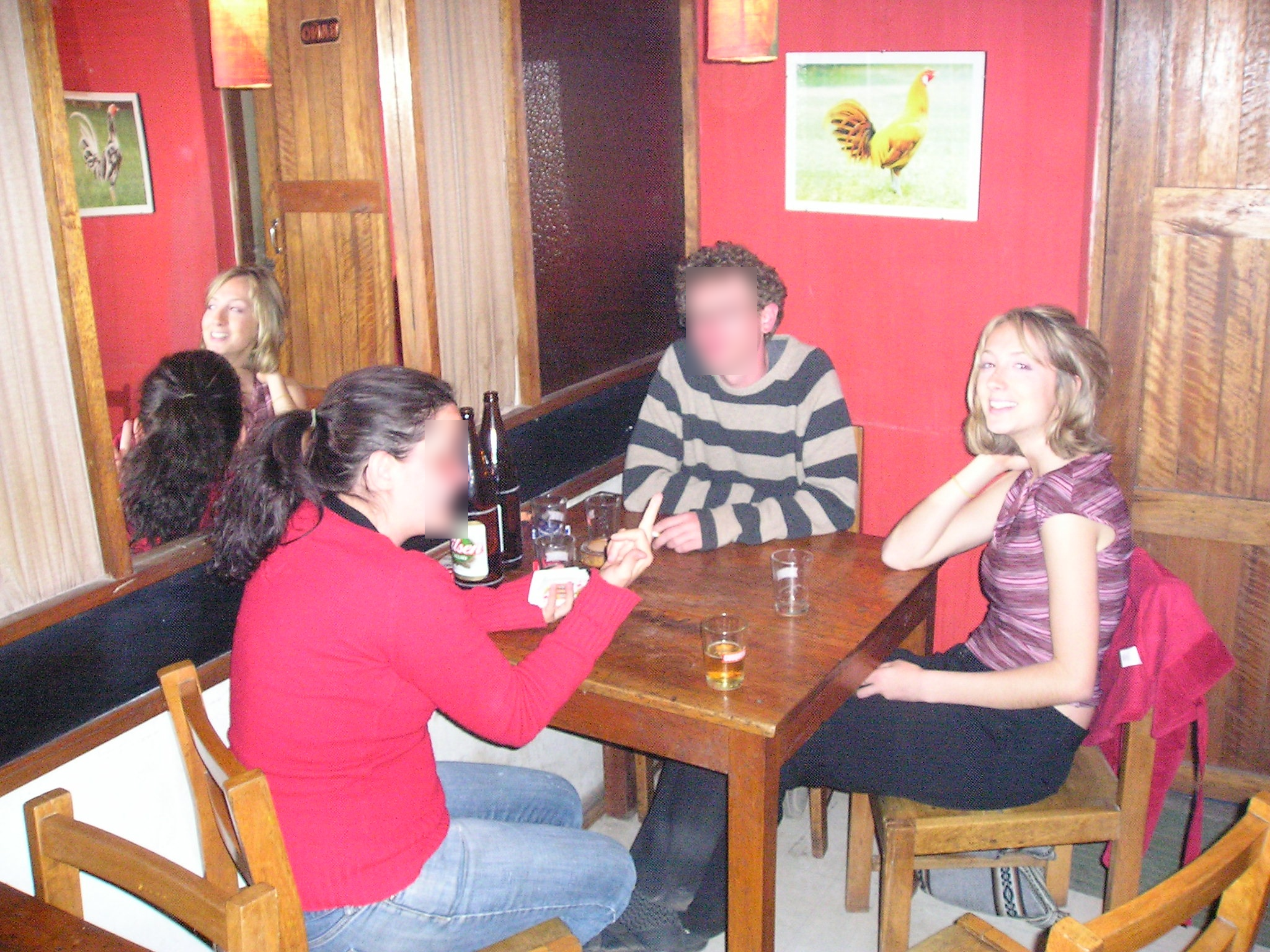
After school at a bar
Once school started, I mostly just went to school and taught English and went to bed tired each night. I made some friends, and if we went out at night, it was mostly to play cards or dance at one of the bars in the Plaza. I enjoyed the international feel at the school, where other languages besides English were also taught. I took a few weekend trips, but school was intense- how does one explain the difference between lay vs lie when one barely understands the difference themselves? Towards the end of my time at the school, when it was more teaching-based rather than learning-based, I had more time to explore.
Lake Titicaca
One of these weekends, I took an overnight bus trip with a friend from South Korea to spend a night near the island Amantani on an island with no electricity in Lake Titicaca, the world`s highest navigable lake. On the way we visited the floating homes and reed boats of the Uros people.
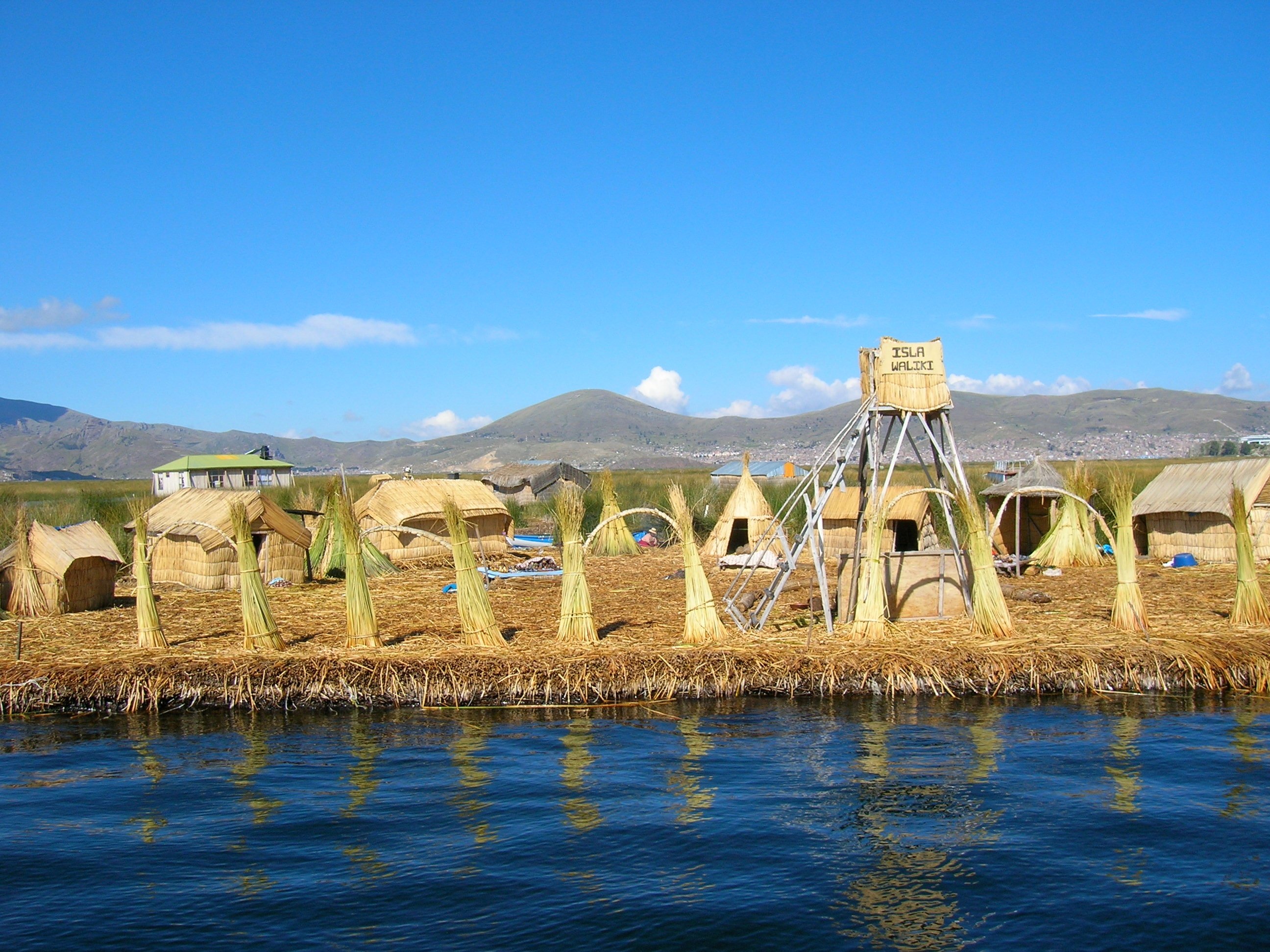
The floating homes of the Uros people
At night on the island, we stayed in the home of a local family, and it was my first time staying somewhere without electricity (other than camping). It was one of my favorite experiences. At night I just sat and watched the moon glisten over the lake without the interference of artificial light. I felt like I was witnessing heaven on earth.
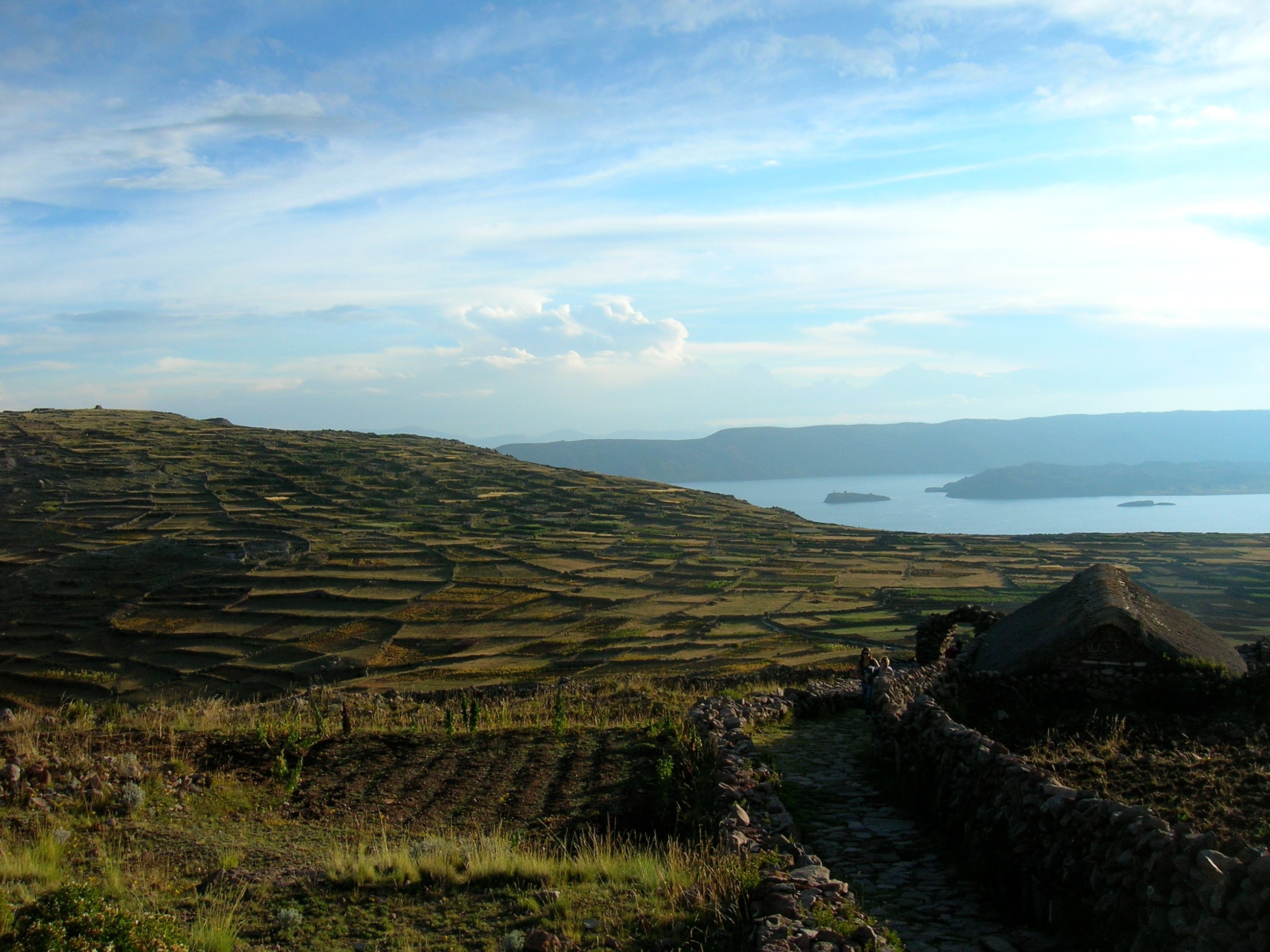
The terraced hills of Amantani
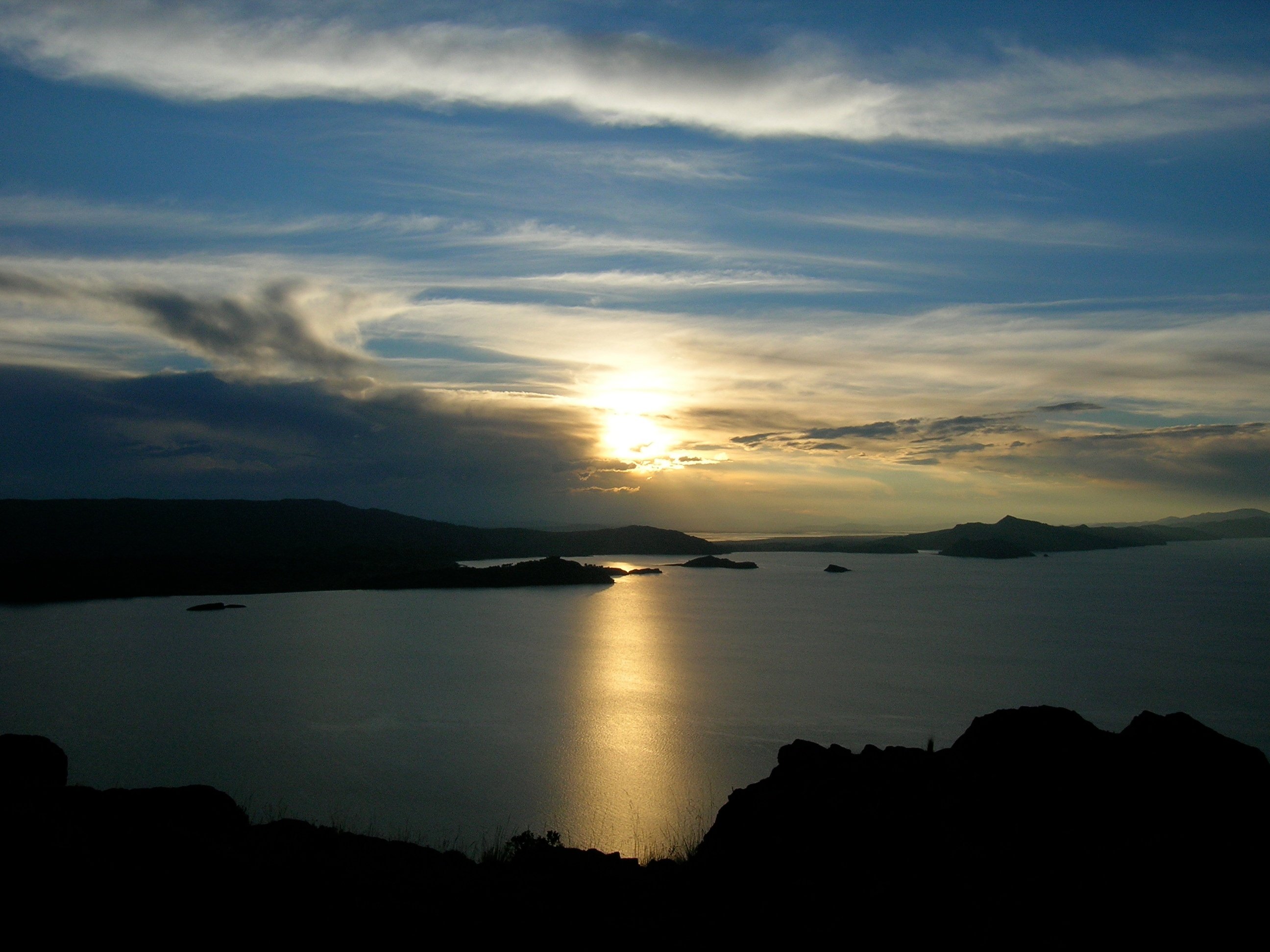
Sunset over Lake Titicaca
I finished school and taught for only a little over a month (I was covering someones classes while they traveled). At that time, I had already decided to return to Ohio and start graduate school to get my Master of Education. While teaching English I taught all ages, from kids to adults, but the teens were my favorite and that is ultimately who I ended up teaching once I returned to the states :-)
Machu Picchu - Salktantay Trek
Before I left though, it was time to see Machu Picchu. I decided to do the 5-Day Salkantay Trek rather than the more popular Inca trail and I am glad I did. The Salkantay Trek is named after the mountain that the trail passes, Salkantay Mountain, though you`ll pass by glaciers and a tropical Andean forest on the way (including coffee plants). It is longer and more strenous than the Inca Trail, but oh so worth it as long as you are someone who likes to hike. The trek is around 74 km (46 miles) long and is most commonly done over 4-5 days (with visiting Machu Picchu on Day 5). Day 2 is the most challenging day that takes most people around 9 hours. It climbs 600 meters in elevation and then descends 1,780 m over 22 kilometers. This is a full and challenging day of hiking, but it is also rewarding and beautiful.
The trek holds historical significance, and like the Inca Trail, was a route the Incas once took to get to Machu Picchu. The main difference is that the Salkantay Trek is through the mountains reaching nearly 4,600m above sea level, whereas the Inca Trail is walking on ruins much of the way. I did not get sick at that altitude, but I had already been living at altitude for a few months at that time, so consider that before your trip. One man from our group had to be carried down by a guide because he got so ill.
It is said that the Salkantay Trek was the route that religious leaders took to get to Machu Picchu because the high elevations brought them “closer to god.”
When I did the trek, I was in a group of about 7 other people and our guides. You carry your gear, but the food and tent are carried by the guides (ours used horses to help carry the load when possible). I think different tours offer varying levels of quality for the food and tents. The food and tents on my tour were simple, but definitely more than enough. Unfortunately, I cannot remember the name of the company with whom I toured. There are small little stores along the way where one can buy snacks if needed (I may or may not have splurged on a ridiculously expensive Snickers bar after the exhausting Day 2 stretch).
Be prepared for all weather since it snowed when I did the hike, which I think was a bit unusual but not unheard of (followed by sticky hot tropical forest days).

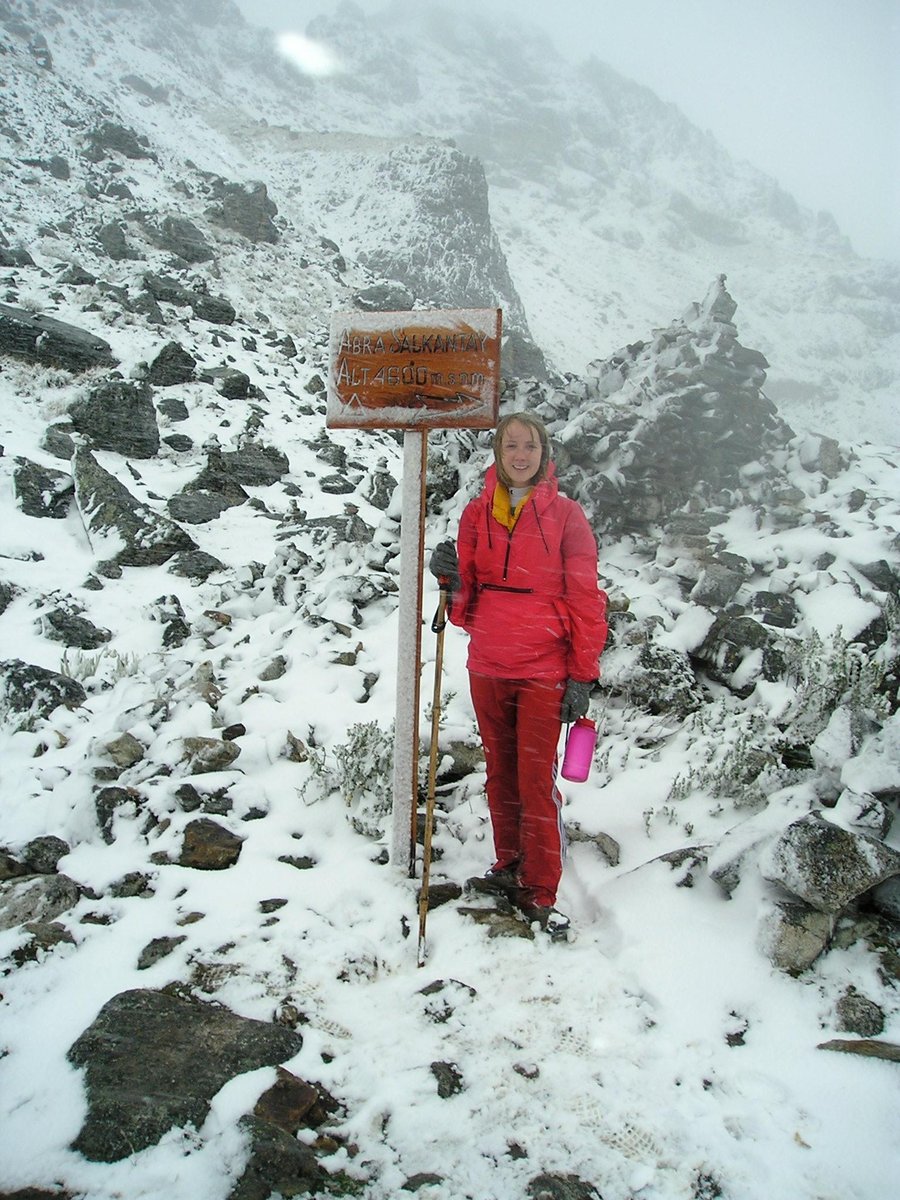




I was a single woman, in a group, alone but not lonely, in mountains that somehow simultanously felt intangible and as if I could just reach out to touch them. It was a time of extreme instrospection coupled with physical exertion, as my most favorite memories tend to be.
At the end of the Trek, you end up in Aguas Calientes and spend the night in a hotel organised by the trek company (after 4 days of hiking and camping, that shower is necessary) and wake up early to be the first to reach Machu Picchu where you see the sun rise over the ruins. You can climb up the separate mountain near Machu Picchu called Huayna Picchu, which I recommend doing if you are fit enough (you need a rope to pull yourself up in certain sections since it is so steep and it can be a bit slippery on the way down).
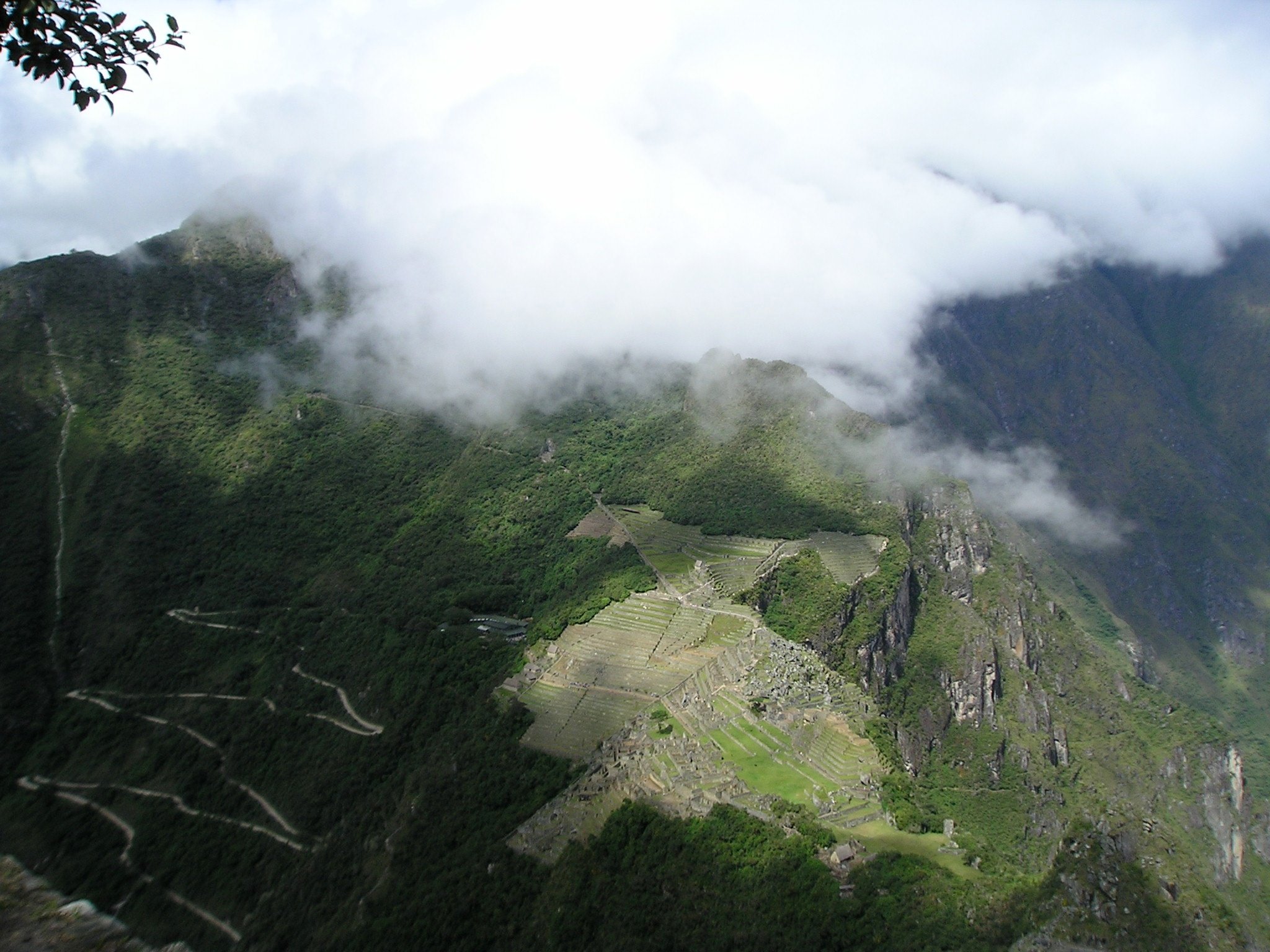
View from Huyana Picchu
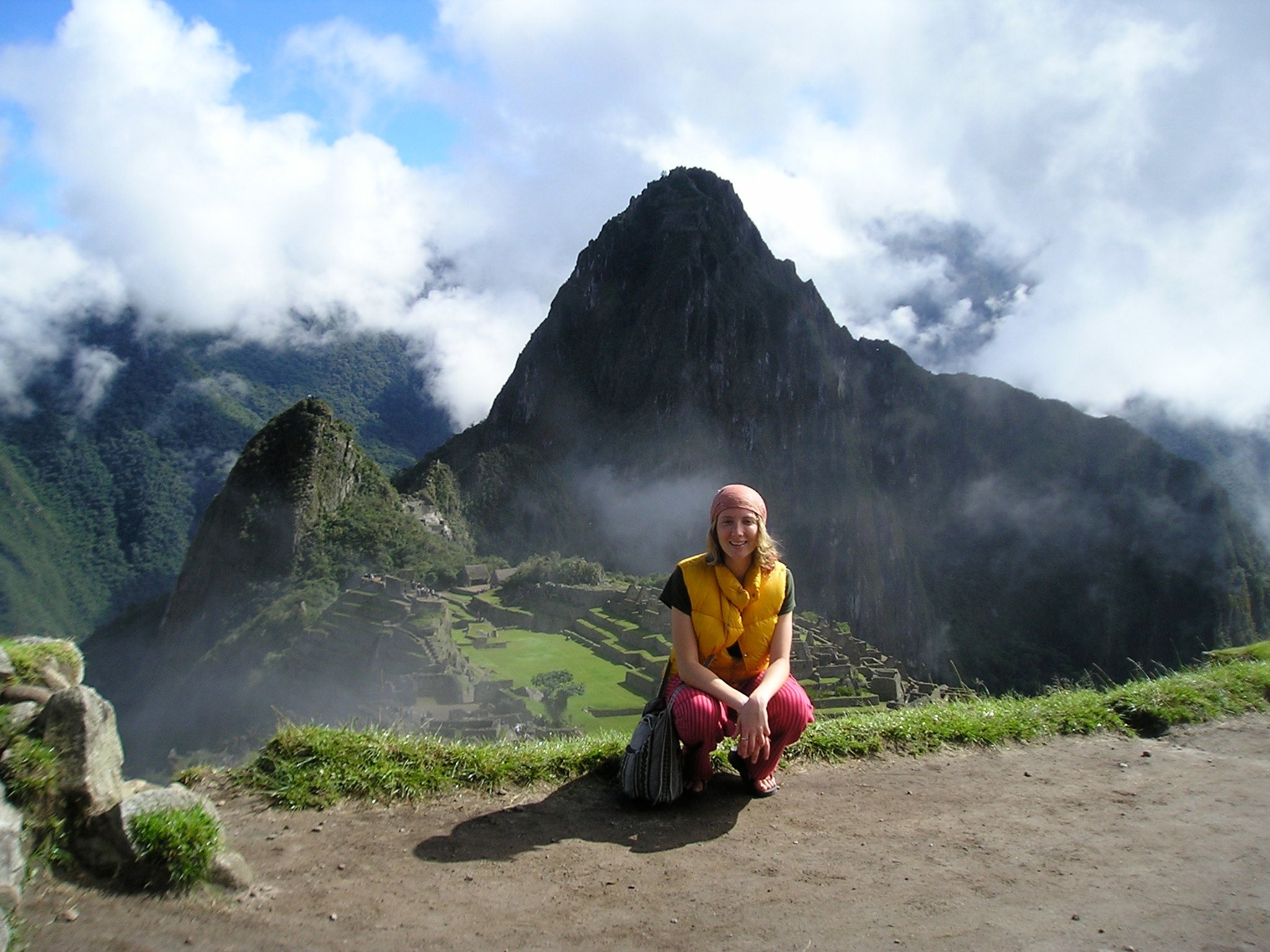
Machu Picchu
I have now been to a few of the other 7 world wonders, but none compare to Machu Picchu to me. Please respect it if you go so that it’s the same magical experience for future generations.
Final Thoughts
After the trek, I returned to Cusco, packed and flew back home. The same but different. Half a year away but a lifetime of memories made.
What do I remember about my time in Peru? As I mentioned, I loved the food and the people. I don`t remember speaking a lot of English, besides when I was at school, but found the Spanish easy to understand with a clear accent (Quechua is also spoken in certain areas). The mountains are unbelievable (maybe not a surprise that I ultimately ended up in Switzerland). My time there healed me in a way for which I will forever be grateful.
Would I recommend it? Absolutely. One can't help but feel a sense of awe and wonder. The history of the Incas and the magic of the mountains intertwine, reminding us that in Peru the past and the present exist in harmonious coexistence, forever preserving the ancient legacy of a place where the extraordinary is ordinary.
But don’t be insensitive. Learn about the local culture and customs. Try the food for the experience not the novelty. Appreciate the culture and artistry of the people without exploiting their work. Be cognizant to the impact of your travel and leave the trails as you found them. Then come back and tell me about it :-)
*********
Weather
A note on the weather, since I know Swiss people love talking about the weather :-)
Cusco experiences a distinct wet and dry season, with weather patterns influenced by its high altitude and proximity to the Andes Mountains. From February to July, Cusco transitions from the rainy season to the drier months. Here's a breakdown of the weather you can generally expect during this period:
February and March:
- These months mark the tail end of the rainy season in Cusco.
- Expect a mix of sunny days, intermittent rainfall, and cooler temperatures.
- Daytime temperatures typically range from 15°C to 20°C (59°F to 68°F), while nights can be chilly, dropping to around 8°C to 10°C (46°F to 50°F).
April and May:
- Cusco experiences a transition period during these months, with decreasing rainfall and increasing periods of sunshine.
- The weather becomes milder, with warmer days and cooler nights.
- Daytime temperatures range from 15°C to 22°C (59°F to 72°F), and nighttime temperatures can drop to around 5°C to 10°C (41°F to 50°F).
June und July:
- These months fall within Cusco's dry season, characterized by sunny days and cold nights.
- It is the peak tourist season, particularly in June when the Inti Raymi festival takes place.
- Daytime temperatures range from 15°C to 20°C (59°F to 68°F), while nights can be significantly colder, dropping to around 0°C to 5°C (32°F to 41°F).
Overall, it's important to note that Cusco's weather can be unpredictable, and even during the dry season, short periods of rain are possible. It's advisable to pack layers and be prepared for temperature variations throughout the day. Additionally, higher elevations, such as Machu Picchu or other mountainous areas around Cusco, may have slightly different weather conditions and cooler temperatures.
When planning your trip, it's always a good idea to check the weather forecast and pack accordingly to ensure a comfortable and enjoyable experience in Cusco.
Have a good trip!

